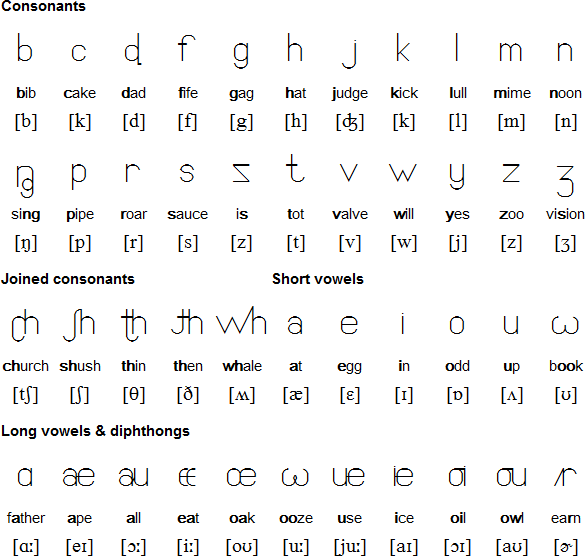It is designed to make it easier for English-speaking children to learn to read English. The idea is that children first learn to read using the i.t.a. then are introduced to standard English orthography at the age of seven. Opinions vary on the efficacy of the i.t.a. and it never became a mainstream teaching tool.
The main problems of using the i.t.a. include the fact that it is based on Received Pronunciation, so people with other accents find it difficult to decipher; the lack of written materials, and the transition to the traditional orthography, which some children found difficult.
Notable features
- The i.t.a. consists of 42 letters, 24 standard lowercase Latin letters plus a number of special letters, most of which are modified Latin letters.
- Each letter represents to a single phoneme.
- Some of the phonemes represented by digraphs in the traditional orthography are represented by ligatures in the i.t.a.
Pitman i.t.a.

Links
I.T.A. Foundation - an organisation which promotes the use of the i.t.a.http://www.itafoundation.org/
i.t.a. - the advantages and disadvantages of the Initial Teaching Alphabet
http://www.foolswisdom.com/~sbett/ita-eval.htm
BBC News article on the i.t.a.
http://news.bbc.co.uk/1/hi/uk/1523708.stm
Activities for learning the (English) alphabet
http://www.smart-kid-educational-games.com/teaching-the-alphabet.html
No comments:
Post a Comment
Note: Only a member of this blog may post a comment.